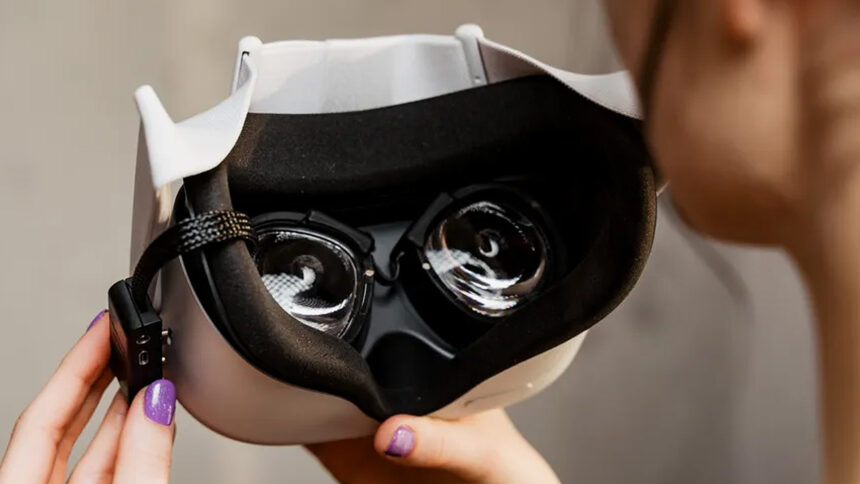
Inseye Lumi is an upgrade module for Quest 2 and Quest 3 that uses a promising new eye tracking technology.
Inseye, a startup located in New York, is currently creating a module upgrade that incorporates eye tracking into Quest 3 and 2. This additional component can be attached to the lenses and easily connected to the VR headset utilizing USB-C and the headphone jack.
Using a combination of infrared emitters and six photosensors, Inseye Lumi measures the intensity of reflected light from the eye. With the assistance of AI, it analyzes this data to ascertain the pupil’s position.
Inseye Lumi with connector and prescription lenses. | Image: Inseye
Conventional eye-tracking systems use cameras instead of photo sensors. Inseye’s solution is said to have several advantages over camera-based systems: significantly lower power consumption, a very high sampling rate (1000 Hz), and a latency of less than one millisecond. However, the system is slightly less accurate than camera-based eye-tracking, which means it is unsuitable for all eye-tracking applications.
Eyeglass wearers will need to purchase prescription lenses from Inseye. Regular glasses and conventional prescription lenses are not supported.
The startup aims to set the module’s price at $160. Individuals who place a fully refundable deposit of $1 on Prelaunch.com will be eligible to purchase the accessory for $100 upon its release. The exact date of the product’s availability is currently unknown.
Inseye Lumi: only useful for PC VR applications
The main beneficiaries of the upgrade module will be PC VR users, especially those who use VRChat (as the company guarantees VRChat integration). However, the Quest headset itself will not receive direct benefits from this accessory, unless developers choose to incorporate support for it in their VR applications.
The exciting question is how well camera-less eye tracking works, as it is more efficient and cheaper to produce than previous solutions
Meta’s CTO Andrew Bosworth ruled out an official eye-tracking accessory for Quest, but said that eye-tracking would one day be part of the base package of every Quest headset. Until then, however, there are still many hurdles to overcome:
Bosworth stated that the inclusion of eye tracking in a product requires considering factors such as cost and weight. Despite these trade-offs, the goal is to maintain high precision while utilizing more efficient and cost-effective architectures. Consequently, the aim is to incorporate eye tracking into every headset.






